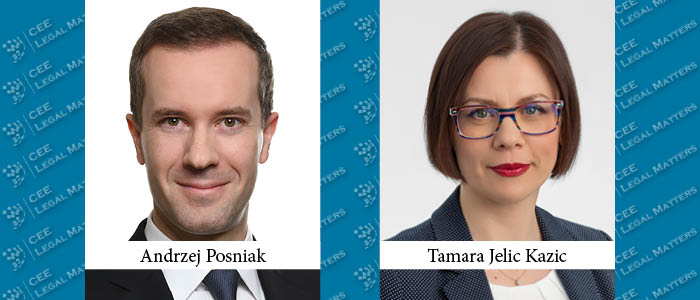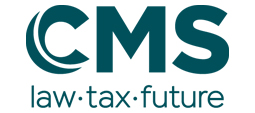CMS Poland Managing Partner Andrzej Posniak and CMS Croatia Partner Tamara Jelic Kazic discuss the complexities and opportunities inherent to the region’s tax landscape.
CEELM: Broadly speaking, how would you characterize tax regimes in CEE to anyone looking into the region?
Jelic Kazic: In the southern part of CEE, which includes ex-Yugoslavia countries, we observe a diverse and complex tax environment. Each jurisdiction has its unique characteristics, but there’s a growing trend toward harmonizing with global standards, particularly those set by the EU and the OECD. Despite efforts to align with these standards, there are still notable differences among member states, especially since some are EU members while others are still awaiting membership. This diversity in tax regulations can pose challenges for investors navigating the region.
At a regional level, this complexity becomes apparent in even more aspects – population, linguistic diversity, economic development levels, and GDP growth rates often lead to diverse expectations and complexities.
Posniak: Adding to Tamara’s point, I’d divide the evolution of tax regimes in CEE into three phases: Initially, before joining the EU, tax systems were often old-fashioned, outdated, and chaotic. The second phase saw a concerted effort to modernize and align tax systems with Western European standards, spurred by EU accession. However, this phase also witnessed aggressive tax optimization strategies, leading to complexities. Currently, we’re in the third phase, where tax systems are becoming more sophisticated, with a focus on tightening regulations to combat tax evasion. All those measures, such as e-declarations, e-scanning, and online cash registers, are aimed at avoiding tax leakages in different jurisdictions.
The most significant evolution lies in the increasing specificity and complexity of tax regulations. Previously, regulations were more straightforward, but now we see a proliferation of anti-tax avoidance measures across various tax areas. Moreover, there’s a notable shift toward digitalization to minimize tax leakage and fraud. Real-time reporting and digital tax filing have become common practices. Additionally, we’re witnessing a trend toward green reforms, aligning with EU directives such as the carbon border adjustment mechanism.
Jelic Kazic: Indeed, the adoption of international standards and practices is evident across the region, although some countries may lag behind their Western counterparts. However, efforts are underway to bridge this gap and create a more harmonized tax landscape.
CEELM: Any local jurisdiction peculiarities that stand out to you in this drive to harmonize regimes?
Jelic Kazic: While each country in the region is motivated to align with global standards, there are nuances in implementation. In general, each country has motives to apply these policies and standards to get an EU membership rolling, while in others, that are already a part of the EU, we see a lot of processes for harmonization.
Posniak: Many EU countries are now implementing EU tax regulations. It’s important to note that implementation deadlines and approaches may differ. Poland is a good example, where the government adopted more creative, sophisticated, and broader regulations than required on the EU level. However, the overarching direction is consistent.
CEELM: How do investors looking at the region perceive the overall taxation climate in CEE markets?
Posniak: For investors, the crucial aspect isn’t whether taxes are high or low but whether they remain stable and reliable in light of a flood of new regulations. We all gripe about the tax system, its frequent changes, complexity, and broad interpretability. Despite imperfect regulations, investors are still drawn to the CEE market. In terms of FDIs, the numbers speak for themselves, with significant sums pouring into Poland, Hungary, Bulgaria, etc. In 2022, Poland ranked at the top of the list of attractive countries for investment in CEE. While the overall tax regime might not offer substantial assistance, it doesn’t deter investors either. What truly matters from an investment perspective are tax incentives like investment zones implemented in Poland or attractive tax regimes that encourage expansion. These systems, along with advanced agreements, enhance profitability and maintain a positive outlook for direct investments.
Jelic Kazic: I agree that stability in tax systems is paramount for investor confidence. However, there are concerns regarding the application and interpretation of tax rules, particularly in the SEE region. Tax authorities need to establish clearer guidelines and foster a partnership approach with taxpayers to address these challenges.
CEELM: What have been the main facilitators or deal breakers in M&A deals from a taxation perspective?
Posniak: While tax systems themselves may not be deal breakers, the lack of stability and predictability can complicate M&A transactions. Inconsistencies in tax interpretations and court rulings that prolong transactions and increase costs frequently demotivate investors looking into the region. Additionally, international transactions are affected by evolving rules on international mergers, emphasizing the need for clarity and consistency in tax regulations.
CEELM: What’s the landscape like in terms of VAT and indirect taxation? Are there any outliers standing out?
Jelic Kazic: VAT regulations are also currently undergoing significant changes, with a focus on minimizing tax leakage and fraud. Real-time reporting and digital tax filing have become standard practices in many CEE countries. Still, complexities remain, particularly in multinational transactions, highlighting the need for robust VAT compliance measures. Additionally, local tax authorities still are frequently not experienced enough to properly enforce regulations.
Posniak: The largest portion of state tax revenues is derived from VAT, which is why tax authorities prioritize its enforcement. However, it’s incredibly complex, particularly in multinational transactions, making it challenging to monitor effectively. The primary focus of VAT is to tighten the system and close loopholes to catch those engaging in fraudulent activities. While this is beneficial, the downside is that the regulations and interpretations have become overly complicated and aggressive in revenue collection. This ends up burdening honest taxpayers who must navigate through tax difficulties aimed at combating fraud. The same complexity applies to income tax, and there may not be a better short-term solution. In the long run, digitization could help for better monitoring and enforcement.
CEELM: What would be one piece of advice you would give investors looking at the region?
Jelic Kazic: The main challenges for businesses in CEE revolve around the complexity and sophistication of tax regulations. I’d suggest that preparations involve a thorough analysis of laws and practices beforehand, together with a degree of courage and preparedness for what’s to come. It’s wise to engage an advisor during the planning phase – given the complexity of the process, numerous questions are bound to arise, and it’s essential to have external expertise to ensure comprehensive coverage.
Posniak: I’d simply underline that sophisticated and complex tax systems are an integral part of our daily lives, particularly for business owners where tax-related risks are inherently tied to business risks. Surrounding yourself with the right people provides a sense of shared understanding because these regulations apply equally to your competitors, making it a universal concern. It’s not about avoiding all risks, which may be impossible, but rather about how we evaluate and mitigate them. Currently, the environment in Europe, including the CEE region, is shifting toward fewer opportunities for aggressive tax optimization and more toward optimizing the business itself.
This article was originally published in Issue 11.2 of the CEE Legal Matters Magazine. If you would like to receive a hard copy of the magazine, you can subscribe here.


